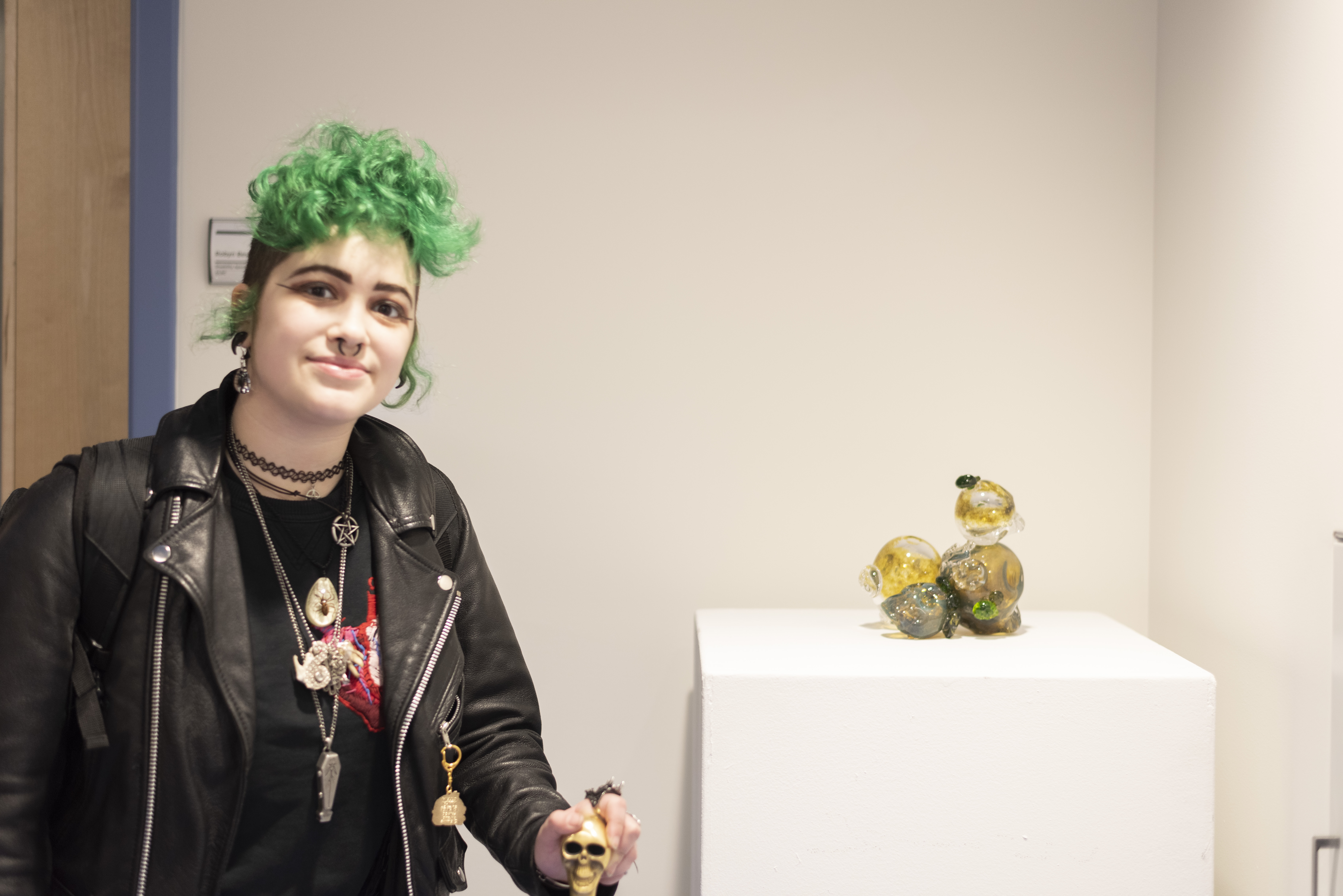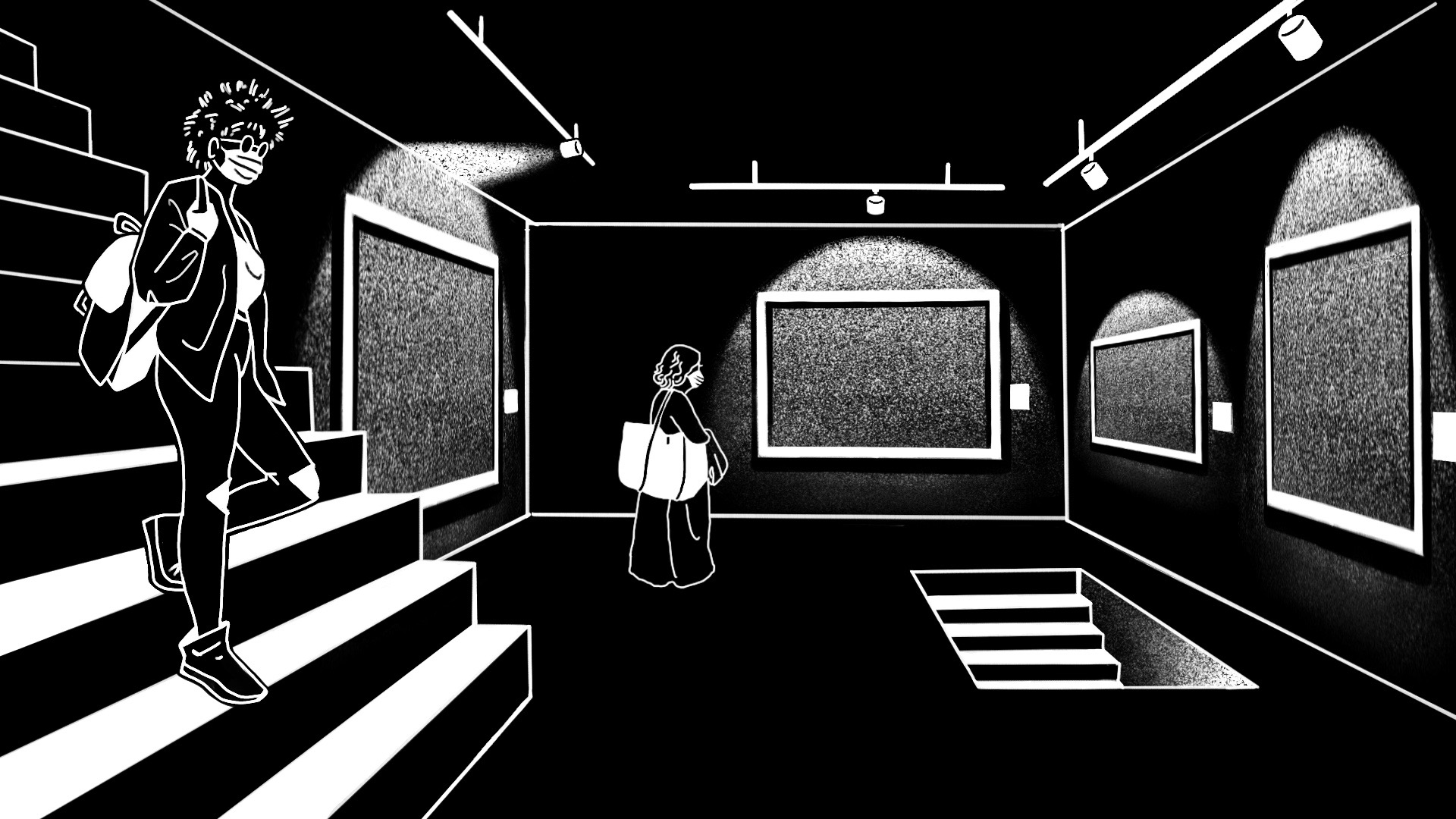
Sterile, grayish white walls have been replaced by blueberry walls accented by canary woodwork. With the recent renovations to the Wellness Center, SAIC has attempted to make the space more accessible and welcoming, yet private, to maintain a level of patient confidentiality. Since 2009, the Wellness Center has been the center for vital resources for students, including nurse practitioners, counseling, and acted as the center for SAIC’s Disability and Learning Resource Center (DLRC). Its renovation suggests that SAIC is attempting to establish a new space, and therefore a new relationship with the Wellness Center for students.

“Voices Embodied: Convergence,” an exhibition dedicated to disability, kicked off the grand opening of the new space, on Feb. 21, 2020. While the hallways had grown bigger, the space was tight for a gallery setting as guests crowded around a single piece. This tightness created an intimate experience with the artworks, but a sensory overload when it came to the crowd and restricted movement between pieces. Each piece offered a widely different view on what disability is. In Noora Badeen’s (BFA 2020) hanging textile piece, a tumultuous face gazes upon the onlooker. I was captivated by Christine Turner’s (MFA Painting and Drawing 2020) abstract paintings that emulate spotted vision. I studied the paintings while experiencing a migraine aura.
Alex Stark (BFA Painting and Drawing 2016), a DLRC advisor, was selected as the curator for the exhibition as, “being someone with a disability as well as someone who is an artist, I really wanted to create an event that addressed both of those things.” Z Fondanarosa (BFA 2020), one of the artists featured in “Voices Embodied,” said they had worked with him in the past. Badeen spoke highly of Stark, noting that they appreciated his guidance: “He helped me choose the two pieces of artwork that reflected my emotions best.” In order to find students’ work to exhibit, the DLRC sent out emails to students within the center to ask for submissions. Artists submitted their works and were carefully selected by Stark.
To help curate the warm environment that artists described, Stark did “studio visits, [and] a dinner so artists could meet each other beforehand. There were other parts like building the website like where we collected their biography information.” The DLRC would sponsor these visits and helped with the “nuts and bolts” of the shows such as transportation, food, the website, and hands on installation. Additional artists who participated were Carly Newman (BFA 2020), Molly Joyce with collaborator Jerron Herman, Marrok Sedgwick.
The Voices Embodied Project had its first iteration, “Cosmos,” in 2019 at the Hyde Park Art Center. Stark describes his reasoning for the location of the first show: “I think that, especially for the first show at the Hyde Park Center, it was really important for me to find a venue that was off campus like the Hyde Park Art Center. The Hyde Park Art Center really speaks to the community. It was a really important choice to me to engage people outside of the school.”

On Thursday, Feb. 20, 2020, one day before the opening of “Voices Embodied: Convergence,” an artist talk at the Hyde Park Art Center held a dialogue between each of the artists whose work was displayed in the Wellness Center. At the talk, artists discussed their artwork, disabilities, and identities.
Textile artist Noora Badeen described her experience to the other artists and the audience: “Prior to the opening, we had a discussion at the Hyde Park Art Center about the work, and narrative behind it. I realized my inability to share my experiences about the war in Iraq is slowly melting, in part because of the wonderful people I have met at this event.”
Artist Ana García Jácome (MA Visual and Critical Studies 2020) noted a similar feeling, she noted that she preferred the artist talk to the first night of the exhibition. “That’s where I really felt that the conversation happened,” Jácome said.
One of the strongest aspects of the show was its showcase of the diversity of disability through various mediums. With such a wide range, viewers were left to contemplate the nuances of disability and identity without the help of an artist to fully digest the work. While an artist talk at SAIC may have reached a wider audience, the large variety of work helped to expand the viewer’s interpretation on what exactly disability was.
Jácome describes her experience with disability, which is reflected in her displayed pieces: “Foot Drop is one of my earliest works, when I was starting to address my own body in my work but still didn’t use the word disability to identify my concerns and embodiment.” She contrasts this piece with a more recent work, titled “Against Certificate of Disability,” that she says clarifies where she stands in regards to disability. But Jácome can also recall the period of time in between the creation of both artworks: “From one to the other there was a long process of several years where I slowly situated my body in other narratives, wider each time, that separated from the personal and intersected with other issues that made me aware of the politics of bodies and particularly of the disabled body.”

Fondanarosa commented, “I felt it was a great opportunity for me and my colleagues to display our work together.” They also applauded the show’s curation and the accessibility of the space. When asked about how he makes spaces accessible, Stark commented that “I found that creating accessible gallery spaces is a lot about finding people involved with different perspectives.” The DLRC also provided their resources to help make the spaces accessible.
Exhibitions such as “Voices Embodied: Convergence” provide a space for disabled artists to engage in open communication throughout the school and community while creating opportunities for disabled artists to display and submit their work. Museums are still growing from their own inaccessibility while disabled artists are dealing with constant social and intersectional barriers. In the light of the pandemic, accessibility is evolving as well as what gallery space means for disabled artists, some of whom are confined to their homes.
SAIC could improve its resources for disabled students by continuing to offer accessible gallery spaces and opportunities, both during and beyond the duration of the pandemic. As Jácome commented, “I think that I would like to see the show in a more visible space, somewhere outside of the medical, where it could trigger conversations not just inside the community that frequents the Wellness Center, but with all the SAIC community and where it is also visible and accessible to the public.” She mentioned the SITE Galleries as a possibility. “We could make that happen,” Jácome added.

The show concluded with a virtual Zoom meeting on April 24, but each of the artists continue their creative practices that touch upon concepts of disability. Ana García Jácome recently completed her thesis which focuses on the history of disability in Mexico. You can also follow her on Instagram at @anafantasma.
Noora Badeen is currently working on a sculpture which focuses on her experience as an Assyrian Iraqi woman living in the 21st century. She’s also been researching human rights in light anti-government protests in Iraq, and working with a writing teacher at Oakton Community College to create a memoir about her life experiences. You can follow her on Instagram at @noorabadeen.
Z Fondanarosa has recently completed an experimental film, Ego Death, which tackles dreams, insomnia, and psychiatric trauma. You can follow them on Instagram at @whitewillowtea.
Stark is hoping to make “Voices Embodied” an annual event. With the help of the DLRC, they are working to create a catalogue of “Voices Embodied: Convergence” that would be accessible on campus and hopefully online.







